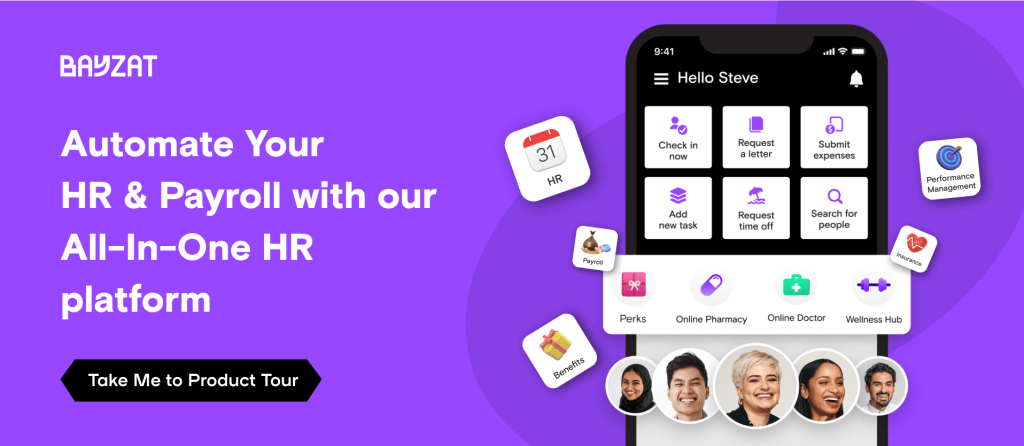Hybrid working became the talk of the town after the pandemic. While the pandemic forced many to allow employees to work from home, companies have not returned to office work. In a Cisco survey, a staggering 90% of UAE employees said they prefer to work in a hybrid work model or be fully remote. So what is it about hybrid working that appeals to workers? Should you consider adopting it with your business? Let’s take a look!
What is Hybrid Working?
Hybrid working combined on-site work with remote work. Your employees may work some days remotely while returning to the office. The hybrid model could apply to all your employees or just some. The number of days workers work off-site can also vary from employee to employee and company to company.
There is no single hybrid model to implement. The right balance of on-site and off-site days depends on your business and industry. The model works best with technology-based industries, as they allow computer-based work to be conducted from anywhere.
According to a recent McKinsey report, “20% to 25% of the workforces in advanced economies could work from home between three and five days a week”. That figure represents almost five times more remote work compared to pre-pandemic levels.
The popularity of hybrid work has found its way to UAE. LinkedIn research found “74% of professionals in the UAE and Saudi Arabia think the pandemic has exposed how employers need to change their approach to flexible working”. In short, employees are asking for more remote work opportunities.
Pros of the Hybrid Working Model in the UAE
The benefits of hybrid working are pushing this work style to the mainstream. Let’s examine the advantages in more detail.
- Increased flexibility for employees
Remote work provides lots of work-life balance improvements to employees. Removing commuting times can help your workers do more than just work and commute. A recent Bayzat survey revealed that fuel is among the most requested reimbursements for UAE employees. The average amount per reimbursement has increased by 18%. With ever-rising fuel costs in the UAE, hitting Dh4.63 per liter for Super 98, consider the cost savings you could pass on to your employees by minimizing their daily travel to the office.
So not only are employees saving money, but they are also saving time. The flexibility of choosing where to work can bring an element of authority. Your employees will feel more in control, creating the work-life balance they want.
- Enhanced employee productivity
“A highly engaged workforce has been shown to increase profitability by 21%, sales by 20% and customer ratings by 10%.” Giving your employees the flexibility to work from home and at the office offers the time they need to maintain a work-life balance. If employees can work from home and come into the office on alternate days, it could lead to a more motivated and engaged workforce. It places your employees in a better frame of mind to come to the office and be ready to collaborate after getting the chance to work whilst caring for their families.
It allows employees to create work conditions that help them thrive. The reality that every HR system has to overcome is that some employees require a more laid-back, relaxed environment. At the same time, some could work better in a busy office environment. You’re allowing your workers to choose by allowing hybrid work.
- Attracting and retaining talent
Ultimately, your organization has to compete for talent. The UAE employee landscape is getting more challenging, and businesses aren’t just fighting for local talent – you’re also competing against international companies.
Hybrid working models appeal to a more diverse workforce. Employees with families, those looking to climb the career ladder, or digital nomads will find something beneficial with hybrid work. It is another competitive advantage you’d have in talent acquisition.
- Operational cost savings for the employee
If your organization hasn’t already done so during the pandemic, it could be wise to look at downscaling your office space. This would reduce overheads such as rental space and electricity and work your office days in shifts with hot desking options. With Bayzat’s HR & Payroll software, you can also gain granularity when it comes to seeing where your overheads lie and insights into employee expenditure data.
Cons of the Hybrid Working Model in the UAE
While the above benefits can be a significant advantage for most organizations, it’s vital to be aware of some common problems with hybrid working models. Some of the most common problems are Human Resource pain points that could lead to the following issues:
- Potential communication challenges
One of the most significant benefits of an office environment is bringing everyone under the same roof. If you need to sort something out with the HR department, it’s just a hop and a skip away. This isn’t necessarily the case when you’re operating under a hybrid work.
You become reliant on technology, and technology doesn’t always work. Something as simple as your internet connection could cut you off from your team and mean you can’t work as effectively.
The flexibility to play with your working hours could also cause misalignment within the team and hinder communication. Some team members may not start working early in the morning, as they thrive more during the afternoons.
- Employee isolation and reduced team cohesion
The isolation from your team isn’t only an issue for communication. The reduced face-to-face interaction can result in lesser team cohesion. This can harm the team and company culture. Suppose you don’t pay enough attention to the technology and software you use to communicate and collaborate with the team. In that case, you can struggle to build team cohesion.
- Monitoring and performance management issues
Performance tracking can also be challenging if you don’t invest in the right software. The inability to actually see your employees at work can result in not fully understanding their performance. Equitable evaluations can become an issue if your office has different hybrid policies for other workers. The good news is that you can manage many of these issues with a proper performance management tool.
- IT infrastructure and security concerns
Cybersecurity risks are increasing for businesses of all sizes. IT infrastructure is a crucial expense, and remote work can increase the cost. You must invest a lot to guarantee your employees aren’t putting company secrets at risk. You’ll also need to invest in proper training to ensure people understand the data privacy steps they must take while working from home.
Strategies for Successful Hybrid Work Implementation in the UAE
You need to focus on implementation to negate the problems with hybrid working systems. With proper care and attention, you can limit the issues and maximize the benefits of hybrid work.
The four essential steps of setting up a successful hybrid work model are:
- Establishing clear communication channels – There is nothing more frustrating for employers and employees than not having the suitable systems to connect with their colleagues, store and share information or even have the level of transparent communication needed to do their jobs. Deploy innovation hubs across your business where teams can share ideas, and managers can review them and guide them to execution. Once employees can easily connect with managers, they are more open to sharing suggestions and receiving feedback.
- Fostering inclusivity and team building – Use communication tools to keep your staff connected. Create opportunities for people to spend time online and offline at company events. You don’t want to make people feel disconnected from the team – welcome everyone the same way, whether they work entirely remotely or within a hybrid framework.
- Implementing performance metrics and KPIs – Every company has a vision and mission. Now it’s time to see that your employees have a shared purpose in achieving their personal goals, their teams’ goals and ultimately, your company’s objectives. This can be challenging when you have new employees joining the workforce, and a vital step towards ensuring they feel a part of the team and are clear on their roles within it. Get your employees on the same page by mapping their career paths, providing consistent feedback and tracking their progress. You could do this by having a performance management system in place.
- Investing in secure and reliable IT infrastructure – Put IT infrastructure at the heart of your business. You want to find reliable software to promote hybrid work. Take care of security issues before they even become a thing. Ensure you teach your employees about security issues and the proper use of the software.
With these steps, you can create a remote working model that works for your employees and your business.

Addressing Legal and Regulatory Considerations
Companies should also clear any regulatory considerations before implementing a hybrid work model. Teleworking agreements are subject to all regular workplace rules. This includes basic salary, tax obligations, regulated paydays, etc. When creating your payroll service, you must take care of these to ensure you make the proper payments. A comprehensive HRMS is often the best solution to ensuring your payroll is up to date.
Case Studies: Companies in the UAE Adopting the Hybrid Model
Bayzat is an excellent example of a company in the UAE adopting the hybrid model successfully. We have put flexibility and employee well-being at the heart of everything. Our employees can balance their remote and in-office work. We have crafted a hybrid working model that puts employee performance at the core.
Conclusion
Every HR system during the pandemic had to quickly adapt to employees working remotely and now having to re-adjust to either returning to the office or adopting a hybrid approach.
Not to mention the fresh wave of changing needs and demands of employees to retain your best talent and ensure your workforce is engaged, happy and productive. “Companies with healthy work cultures provided three times more returns to shareholders during the pandemic,” according to McKinsey. But, the question on every HR manager’s lips is, how do you maintain your organization’s culture and deliver a world-class employee experience so your profit margins don’t decline?
Only you can assess if your organization is geared up to adopt a hybrid model. It doesn’t matter whether your workforce is in the office, working remotely, or both. There are solutions you can invest in to help digitize and automate your processes to deliver a world-class employee experience, faster payroll processes, and streamline your HR. Contact our team at Bayzat for a demo, and we will show you how to re-imagine your future!









Get Social